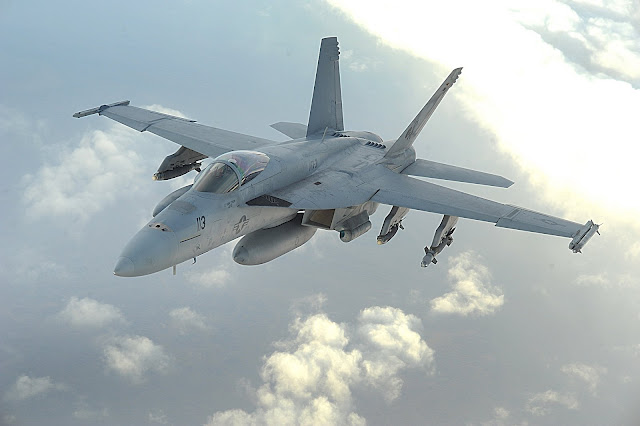The SEPECAT Jaguar is an Anglo-French jet attack aircraft, originally used by the British Royal Air Force and the French Air Force in the close air support and nuclear strike role, and still in service with the Indian Air Force.

The Jaguar is an orthodox single-seat, swept-wing, twin-engine monoplane design, with tall tricycle-type retractable landing gear. In its original configuration, it had a maximum take-off weight in the 15 tonne class and could manage a combat radius on internal fuel alone of 850 km (530 mi), giving the Jaguar a greater operational range than competitor aircraft such as the Mikoyan MiG-27. The aircraft had hardpoints fitted for an external weapons load of up to 10,000 lb (4,500 kg), typical weapons fitted included the MATRA LR.F2 rocket pod, BAP 100-mm bombs, MATRA AS37 anti-radar missiles, AIM-9 Sidewinder missiles, and Rockeye cluster bombs.The RAF's Jaguars gained several new weapons during the Gulf War, including CRV7 high-velocity rockets and American CBU-87 cluster bombs. Finally, the Jaguar was equipped with either a pair of French DEFA cannons, or alternatively British Aden cannons.

The Jaguar International had the unusual optional provision for overwing pylons, used for short-range air-to-air missiles, such as the Matra R550 Magic or the AIM-9 Sidewinder. This option frees up the under-wing pylons for other weapons and stores. RAF Jaguars gained overwing pylons in the buildup to Operation Granby in 1990, but French Jaguars were not modified. The RAF's Jaguar 97s were intended to be wired for the carriage of ASRAAMs on the overwing launchers, but clearance of this weapon was never completed because of funding cuts.
Originally conceived in the 1960s as a jet trainer with a light ground attack capability, the requirement for the aircraft soon changed to include supersonic performance, reconnaissance and tactical nuclear strike roles.
compiled by XENOCIDE




























